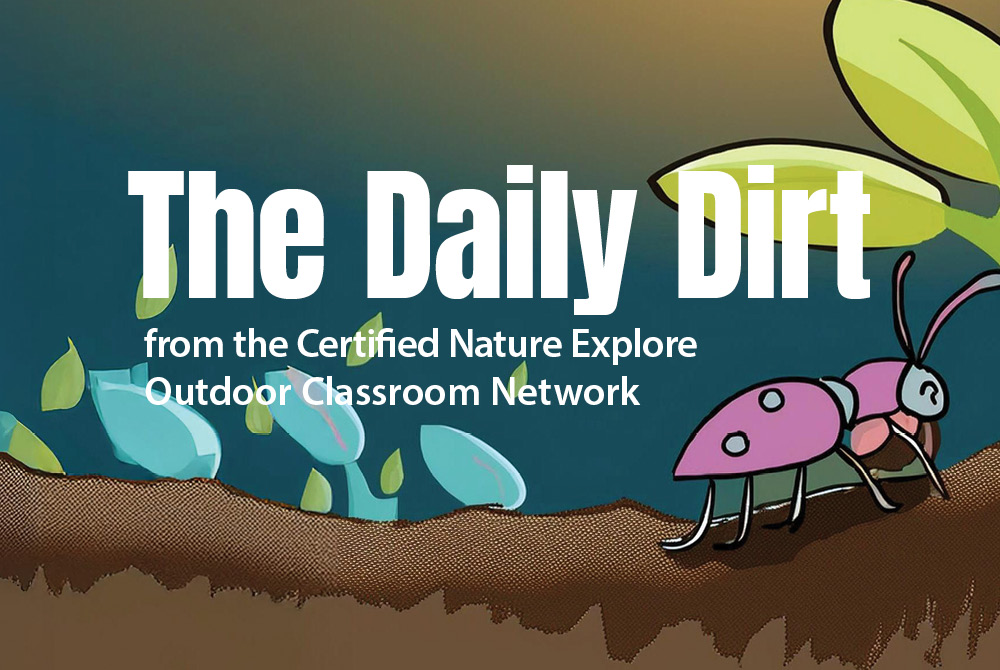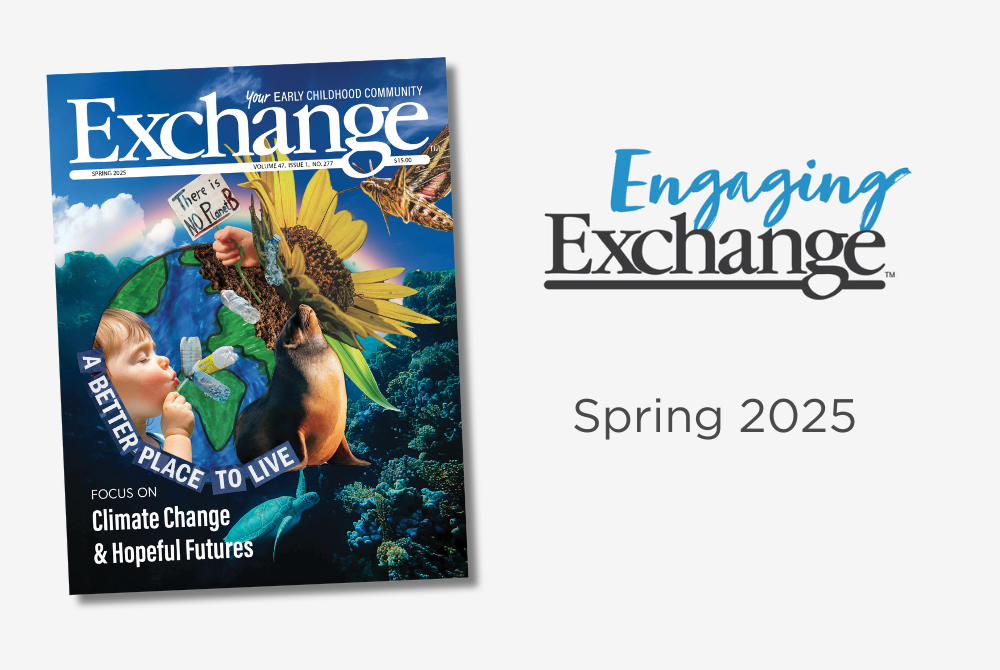We were all children once. We had imaginary friends and big dreams that today we may laugh at, fondly remember, or even regret not pursuing. I once wanted to be a doctor, and then realized that I do not really like seeing blood. Then I wanted to become a pilot and realized that I needed to study a lot of mathematics and physics, and the list went on and on. But here I am today trained in international business administration and working with education and communications in a national conservation area. Never in my childhood would I have thought that this would become my future, or that we would be focused on the protecting the environment as much as we are doing now. Or that I would end up where I am today, telling my own story to inspire others. I confess that early in my life I was exposed to nature and I took it for granted. But I am very thankful that my parents raised us and nurtured us to love nature, showing us how we should always take care of it because we need nature more than it needs us. My parents made us plant trees to have shade and fruits, made us clean up after parties and separate the waste, and we could not take long showers because we were not to waste water. Now, we understand what they were teaching us.
The first years in life are a very critical period, with young brains developing rapidly in all ways: socially, cognitively, and emotionally. It is also during this stage that children develop their attitudes, values, and beliefs about the world around them, which can shape their behaviors and habits for life. Early childhood is where we have to begin to grow the sustainability mindset. Talking to children about practices and policies that promote the environmental, social, and economic sustainability seems quite involved but we have reached the stage where there is no time to waste because there is no “planet B.” This process involves creating a safe and healthy environment for children, promoting responsible consumption and production of goods and foods, and developing sustainable practices that will support the long-term well-being of the planet and its inhabitants. However, this process can only happen when people’s basic needs are met, so we need to recognize that there are many challenges when we talk of people’s priorities and we have poverty occupying a big space in underdeveloped countries. Parents have to think of feeding their children first, keeping them well and healthy, and educating them, before they can think of the future and the environment that they will be living in. We only protect what we know and see, and as Wendell Berry said, “the Earth is what we all have in common” so we might as well work together to protect it.
That is where education comes in and plays a very important role in ensuring that children are given opportunities to develop their brains to the fullest. This is how we hope to shape the future; we do a lot of work raising awareness about the importance of providing better conditions for education for children at all levels. Perhaps, having an open mind can help people understand the importance of preserving the environment for the long-term, and taking action to mitigate environmental damage that we now experience firsthand around the continent through recent devastating events such as cyclones, droughts, and unexpected rains causing floods.
ADVERTISEMENT
In both urban and rural settings, there are challenges that create barriers for children to attend preparatory early childhood development programs. We have different backgrounds, principles, and values that guide us, and of course, countries’ policies and education priorities that make it difficult for children to get an education earlier in life. Faced with immediate and pressing challenges, the environment and conservation are a whole other chapter in this book of life, which some people do not even get to. Nevertheless, sustainability does not have to be seen as something additional. We can include it in our daily routines and respect Mother Nature and all her living organisms. The ideal way forward in my opinion is to combine our strategies to promote a culture of conservation that is integrated into early childhood education, setting a foundation for a more sustainable future.
We have to create harmony in what we do and who we are. Considering Nelson Mandela’s vision of combining conservation and human development, where he said “Conservationists must take into account the needs of the people around the reserves.” More conservation areas should play a bigger role in this. In Gorongosa National Park we have a dual objective of preserving the environment alongside human development. We work with everyone. We help create preschools in rural areas for children as young as 3 years old who have never had a preschool before. We also work with the older generation who has as little education as a grade 2 level, by raising awareness on different issues from better access to healthcare, education, and other essential services, to the management of their natural resources, incorporating conservation in it all. Moreover, we work with these communities to expand their potential in finding conservation and nature-based solutions for their problems, while ensuring their urgent priorities are also addressed, especially for the most neglected communities.
Through education and provision of jobs we ensure that the communities understand the value of conserving these natural spaces and the animals living there, which they share an ecosystem with.
Here is exactly what we do and we hope that this model can be replicated in other places:
We work with educational services to help create after school clubs such as eco clubs where all children learn about the environment and the importance of conserving it, including how to recycle and manage waste. Environmental education can teach people about issues such as climate change, pollution, and deforestation, and provide them with the knowledge and skills they need to address these issues.
We also focus on gender equality and create opportunities for local youth to continue with their higher education through scholarships and internships in and outside the park.
We bring into the park all community members from children to adults to experience a safari where they can actually see the animals and landscape through a different lens to fathom the real value of these healthy, living natural resources which are more valuable being protected.
We provide the tools, infrastructure and training to communities, to manage their own resources through community-based natural resource committees where they learn about what they have, and make a plan to manage it sustainably and make a living out of it.
We plant native trees to restore a forest, and at the same time, teach the community agro-forestry where they can produce a commodity such as coffee or cashew while also having their subsistence crops in the same land. We encourage rotation of crops and create jobs at the same time.
People relate to tangible examples and being able to experience and be part of actions that allow changes in their lives. When there is interconnection between conservation, community development, and people as individuals, they are willing to contribute. But all these practices require a commitment. People need to witness and reap the benefits throughout the process in order to see the growth. Storytelling is a big tool we use to emphasize voices of sustainability where the 3 P’s meet (people, planet, and profit), to ensure there is a foreseeable, realistic, and prosperous future. We base our work on people’s needs as steps that go up. We help with opportunities that uplift people, and then encourage them to grow with practical, dynamic activities such as those mentioned above. Women and girls are key players in this process of change because they (we) are the main caregivers, especially in the early years of life. Making sure women are being empowered is also the way forward to ensure a greener future for all. Ensuring gender balance also involves challenging traditional gender roles and stereotypes, promoting equality, and creating a safe and inclusive environment for all children.
Considering that sustainability means “meeting our own needs without compromising the ability of future generations to meet their own needs.” We have to remember once again that we were all children once. And it would have been nice if someone had thought of us when we were little and not compromised our needs then, so that we could all thrive. The time for change is now.
Larissa Sousa is the associate director of the communications department for Gorongosa National Park in Mozambique. She started her journey at Gorongosa seven years ago as the girl’s education program manager, helping change the lives of many women and girls as well as raise awareness on conservation. Girls clubs have as the main objective keeping girls in schools and out of early marriages as well as improving their reading and writing skills. Sousa is still very much involved in all the educational programs of Gorongosa, especially the one recently started on girls and early childhood development programs (preschool clubs). She is a global leader for the World Forum Foundation, and an ECD representative for Mozambique. She holds a bachelor’s degree in international business administration from HAMK UAS Finland, and a master’s in business administration from Africa University in Zimbabwe.
Related
ADVERTISEMENT












